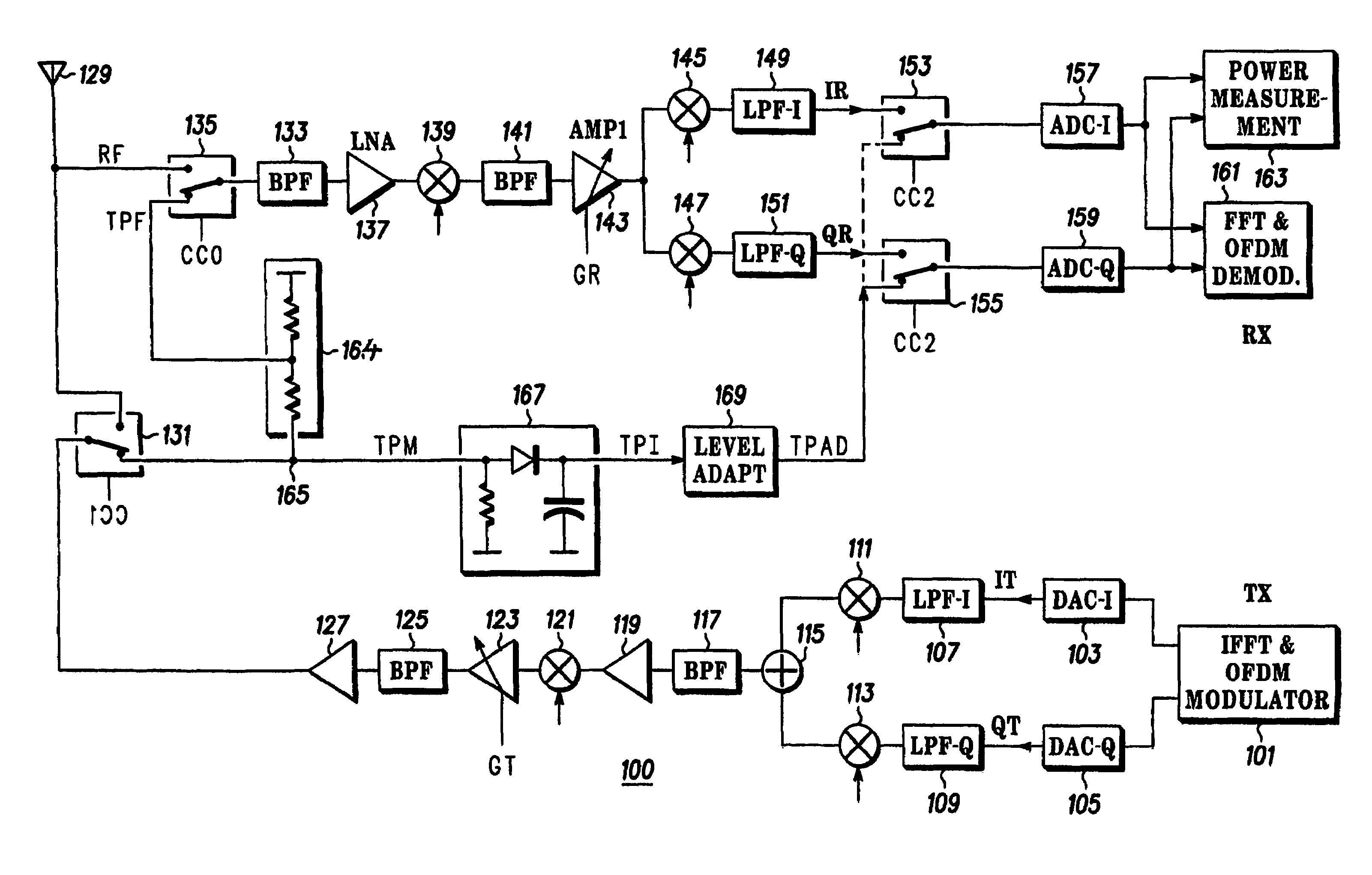Transmitter and receiver gain calibration by means of feedback in a transceiver
a transceiver and feedback technology, applied in the direction of transmitter monitoring, receiver monitoring, transmission monitoring, etc., can solve the problems of high linearity, difficult to achieve without calibration, and inability to fabricate the transceiver, so as to achieve accurate absolute gain and accurate gain calibration , the effect of low distortion
- Summary
- Abstract
- Description
- Claims
- Application Information
AI Technical Summary
Benefits of technology
Problems solved by technology
Method used
Image
Examples
Embodiment Construction
[0034]For clarity, the following description of a preferred embodiment of the invention focuses on the application in a HiperLAN2 transceiver, but it will be apparent that the invention is not limited to this application and can be used in a variety of transceivers requiring or benefiting from calibration.
[0035]FIG. 1 is an illustration of a HiperLAN2 transceiver in accordance with a preferred embodiment of the invention.
[0036]A transmitter unit comprises a digital part and an analog part. The digital part comprises an Inverse Fast Fourier Transform (iFFT) 101 function for modulating a data stream to be communicated into a plurality of subchannels, as are well known for OFDM transmitters. The iFFT 101 is complex and produces an in-phase (I) and quadrature (Q) signal. Each of the I and Q signals are converted to analog signals in each of the two Digital to Analog Converters (DAC) 103,105. The converted I and Q signals are low pass filtered in Low Pass Filters (LPF) 107, 109 to remove...
PUM
 Login to View More
Login to View More Abstract
Description
Claims
Application Information
 Login to View More
Login to View More - R&D
- Intellectual Property
- Life Sciences
- Materials
- Tech Scout
- Unparalleled Data Quality
- Higher Quality Content
- 60% Fewer Hallucinations
Browse by: Latest US Patents, China's latest patents, Technical Efficacy Thesaurus, Application Domain, Technology Topic, Popular Technical Reports.
© 2025 PatSnap. All rights reserved.Legal|Privacy policy|Modern Slavery Act Transparency Statement|Sitemap|About US| Contact US: help@patsnap.com



